
Real patient stories
Everyone’s path to an APDS diagnosis and treatment with Joenja is different. Hear stories from our community members, including their journeys to diagnosis and how Joenja fits into their lives.

Tyler, person living with APDS

Get to know the Joenja community
Hear from real patients and caregivers
Patients, caregivers, and healthcare providers were compensated for their time. Individual results for patients may vary.
Choose a profile:
Patients

{name}
{description}

{name}
{description}
Meet
Tyler
!
Age:
Young adult
Location:
Pennsylvania

“I used to believe that my future was uncertain, but now I look forward to it. I have been enjoying the hobbies and the life I once thought may not be possible to enjoy.”
Special interests:

History

Video Games

Programming
Meet
Tyrek
!
Age:
Young adult
Location:
Alabama

“There’s still a lot I hope to experience. I want to travel outside the country. I want to go sightseeing and socialize with people from different regions and cultures. Being stuck at home for most of my childhood made me want to travel and see all the places our world has to offer.”
Special interests:

Music

Travel

Cross-cultural experiences
Meet
Liam
!
Age:
Adult
Location:
Arizona

“The younger version of me would be proud of the man I’ve become. I am living life to the fullest, making the most of my days. Besides working, I spend my days with my partner, my dog, and my family. Persevering through the tough times has been worth it.”
Special interests:

Ju-jitsu

Cooking

Animals
Meet
Annie
!
Age:
Adult
Location:
Kentucky
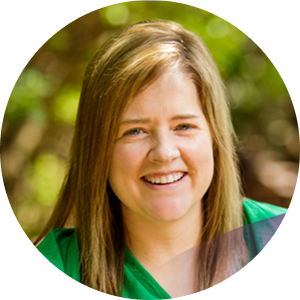
“At this stage, I want to make the very best of everything ahead–with my husband, in my profession, and with my family and friends. As I face the road ahead, I know that I do so with strength in my heart. The road is never easy, but having support, love, and people who listen, help us all stay strong in the face of APDS.”
Special interests:

Healthcare

Travel

Family
Meet
Mariana
!
Age:
Young adult
Location:
California
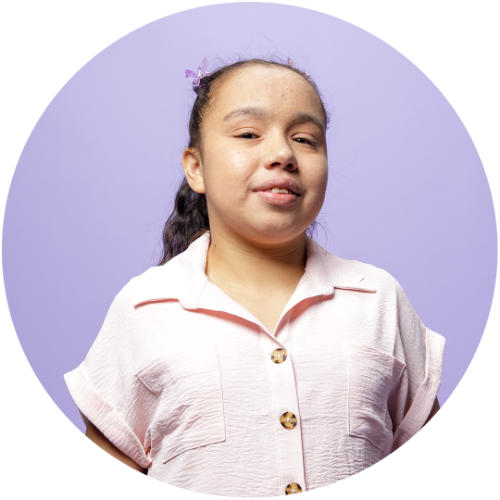
“Music, especially piano, continues to be a huge part of my life. What started as an escape during those years of long hospital stays has grown into something more—a symbol of my resilience. Instead of playing to escape my reality, I play to celebrate how far I’ve come.”
Special interests:

Music

Theatre

Football
Meet
Twana
!
Age:
Adult
Caregiver to Tyrek
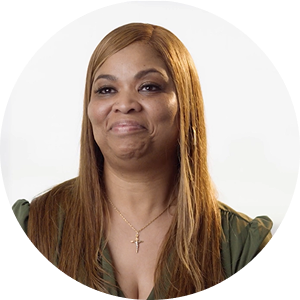
“Since starting Joenja I can feel the “normal” coming back into our lives, even if it’s not normal normal. But I see how far Tyrek has come: he’s making more friends, he seems more comfortable talking about his APDS diagnosis, and he’s more independent.”
Special interests:

Family

Football

Concerts
Choose a profile:

Meet
{name}
Age:
{description}
Location:
{location}




Meet
{name}
!
Age:
{description}
Location:
{location}
Special interests:

{interest_01}

{interest_02}

{interest_03}
{quote}
Up next: Content >
Content from {name}:
{media}
< Back: Bio

Learn more about our patient and caregivers’ Joenja journeys
Joenja Journeys: An APDS Series
5:40
Listen in as Tyrek, along with his mother and caregiver, Twana, share their experience with APDS. Tyrek explains the impact his symptoms had on his childhood. He shares his personal experience with Joenja and the ways it has helped him manage his APDS.
View transcript
Tyrek:
It means a lot to me, knowing that it is other people like me, because when I was a kid, I used to think I was the only one.
Twana:
My name is Twana. I am the caregiver of my son Tyrek, who is a patient with APDS. My husband and I had been trying to get pregnant for some time. We were just so happy that we were finally parents. It was a lot of fevers. We would take him to the emergency room and everyone would tell us there’s nothing wrong. I knew something had to be wrong.
Tyrek:
My childhood mainly consisted me being in and out the hospital, pneumonia, surgeries, ear tubes. I missed a lot of school ‘cause I was constantly sick. I really didn’t get to hang out with any of my childhood friends, so whenever I did get a deep connection, I would lose it. Oh, why you can’t come outside and play? You kind of laugh at that person. Oh, you got the cooties. It turned a lot of friends into bullies.
Twana:
We kept him in the house pretty much just him and his father and I. We would take him to a game room. We have our little wipes with us. We had to wipe off the little buttons and whatever. His doctor, he had referred us to the NIH Clinic.
Tyrek:
The first time I went to NIH, they drew a lot of blood from me and they used that for testing, and they told us, well, you have APDS.
Twana:
Me as a mom, I felt good that we had this diagnosis.
Tyrek:
We didn’t know what the next step was. We didn’t know what to do, so we were still kind of lost.
Twana:
Talking with Tyrek, he said he wanted to try the Joenja so that he can have a little bit more normal life.
Tyrek:
In my experience on Joenja, I started feeling better. I started getting sick less.
Twana:
He flourished. He was able to start living.
Tyrek:
Now I’m able to have a job. I’m able to have friends. I’m able to just mainly be free.
Twana:
We were living behind a locked door. We unlocked that door. We’ve invited friends in.
Tyrek:
Knowing that it is other people like me. We got the same story you can relate to or share your story with or hear their story.
Twana:
It feels good. It feels good to have someone just like you.
Tyrek:
You’re not alone and don’t be afraid. It will get better. It’s just going to take some time.
Twana:
I would just like to say we’re here. We’re here.
On screen:
Joenja (leniolisib) is a prescription medicine that is used to treat activated phosphoinositide 3-kinase, delta (PI3Kδ) syndrome (APDS) in adults and children 12 years of age and older. Important safety information. Tell your healthcare provider if you are pregnant or plan to become pregnant. Joenja may harm your unborn baby. Your healthcare provider will do a pregnancy test before you start receiving Joenja. Use effective birth control to prevent pregnancy while taking Joenja, and for one week after you stop taking Joenja. If you plan to become pregnant, continue taking your birth control for one week after stopping Joenja. Talk to your doctor about what type of birth control method is right for you while taking Joenja.
It is not known if Joenja passes into your breast milk. Talk to your doctor about the best way to feed your baby if you take Joenja. Tell your healthcare provider about all the medicines you take, including prescription and over-the-counter medicines, vitamins, and herbal supplements. Joenja and certain other medicines may affect each other. Tell your healthcare provider if you are scheduled to receive an immunization (vaccine). Joenja may affect how well a vaccine works. Know the medicines you take. Keep a list of your medicines and show it to your healthcare provider and pharmacist when you get a new medicine. The most common side effects of Joenja include headache, inflammation of sinuses and dry, itchy, and inflamed skin (eczema). These are not all the possible side effects of Joenja. Tell your healthcare provider about any side effect that bothers you or does not go away. You can also report negative side effects to FDA at 1-800-FDA-1088 or www.fda.gov/medwatch, or Pharming medical affairs at (800) 930-5221. For more information, go to Joenja.com. For the full prescribing information, go to www.Joenja.com/prescribing-information.pdf.
Close Transcript
Joenja Journeys: An APDS Series
4:52
Listen in as Mariana, a patient living with APDS, shares how her symptoms as a child affected her life as well as what Joenja means for her.
View transcript
Mariana:
I mean, I’ve always kind of had a feeling that I was different. From early stages, my mom already immediately saw that I was already having problems. I was bleeding almost every single day, and I would also be having fevers every single day. But, the doctors would just tell her that “Oh, it was just like a phase. Like, she’ll just grow out of it.”
Over time, she still saw no improvement at all, and she just saw things getting worse. That’s when she decided to just get a second opinion. They ran a bunch of tests, and with this genetic test, they saw that I indeed had APDS. I was diagnosed when I was around 3 or 4. It wasn’t until the when I was like in elementary school I actually started noticing it.
I would have like easily 7, 8 doctors’ appointments per month, while the other kids got to do normal childhood experiences like they could go to the park, play in the playground, go to school every day, have time to spend with their friends and family. I would just spend my time being stuck in a hospital room.
And that’s not even counting the times that I was, like, really sick because I feel like the most, out of all the things that I most struggle with is infections. I would easily be getting like at least 1, 2 infections every year. While my APDS was the start of something, the journey was far from over.
I was willing to try anything if it meant for a healthier life. Within a few months of starting JOENJA my parents and my doctor started, started, started noticing some signs of improvement. It just felt like a new chapter in my life. It’s which led to controlling my symptoms a lot better. And it also led to less hospital visits as well as less doctors appointments. When you have a APDS, you’re afraid that at any moment you could be fine, but then out of nowhere you something bad happens and you wound up in the hospital again.
There wasn’t a specific treatment or medication that was that was specifically used to treat APDS, but since taking JOENJA, this sense of uncertainty just started fading, and now I have at least a more clear sense that now I’m going to be able to do all the things that I’ve always wanted to do. One of my biggest milestones that I’m definitely proud of is that I’m going to I’m finally graduated from high school, and now I get to start at the beginning of my going off to college this fall.
I’m excited to start this chapter in my life, and I’m very excited to be able to follow my dreams and become the person I’ve always known I can be.
On screen:
Joenja (leniolisib) is a prescription medicine that is used to treat activated phosphoinositide 3-kinase, delta (PI3Kδ) syndrome (APDS) in adults and children 12 years of age and older. Important safety information. Tell your healthcare provider if you are pregnant or plan to become pregnant. Joenja may harm your unborn baby. Your healthcare provider will do a pregnancy test before you start receiving Joenja. Use effective birth control to prevent pregnancy while taking Joenja, and for one week after you stop taking Joenja. If you plan to become pregnant, continue taking your birth control for one week after stopping Joenja. Talk to your doctor about what type of birth control method is right for you while taking Joenja.
It is not known if Joenja passes into your breast milk. Talk to your doctor about the best way to feed your baby if you take Joenja. Tell your healthcare provider about all the medicines you take, including prescription and over-the-counter medicines, vitamins, and herbal supplements. Joenja and certain other medicines may affect each other. Tell your healthcare provider if you are scheduled to receive an immunization (vaccine). Joenja may affect how well a vaccine works. Know the medicines you take. Keep a list of your medicines and show it to your healthcare provider and pharmacist when you get a new medicine. The most common side effects of Joenja include headache, inflammation of sinuses and dry, itchy, and inflamed skin (eczema). These are not all the possible side effects of Joenja. Tell your healthcare provider about any side effect that bothers you or does not go away. You can also report negative side effects to FDA at 1-800-FDA-1088 or www.fda.gov/medwatch, or Pharming medical affairs at (800) 930-5221. For more information, go to Joenja.com. For the full prescribing information, go to www.Joenja.com/prescribing-information.pdf.
Close Transcript
Joenja Journeys: An APDS Series
4:18
Listen in as Annie, a patient living with APDS, shares her emotional journey to diagnosis.
View transcript
Annie:
Some of the worries I had growing up was I wasn’t able to participate in everything my siblings were able to do. They were all in the band. I wasn’t able to do band because my breathing wasn’t good enough. I wasn’t able to go to slumber parties and things with my friends because my parents were too worried I would get sick or I had an appointment or an infusion or anything I needed to do. When I was growing up, the biggest health challenges were constant skin infections. I was in the hospital all the time for infections, abscesses, anything like that. I had pneumonia once a year, so the breathing difficulties and the lung issues, all of those kind of things. My doctor locally knew something was wrong, and that’s when he sent me for genetic testing. So once I received my diagnosis, I was feeling overwhelmed, but also happy that they finally figured out what was wrong with me.
The fact that I don’t have to find a specialist for every issue that I have. The fact that I don’t have to see a doctor for every minor thing, so I have less doctor visits and less amount of pills I have to take every day. I was first introduced to Joenja after I was genetic tested. Being treated with Joenja has been literally life-changing. It’s also changed just for the simple fact that whenever I do get ready to have a child, I don’t have a constant fear of what if they’re born with this condition. I know that there’s medicine now to help improve that condition and that there’s always something to help them.
On screen:
Joenja (leniolisib) is a prescription medicine that is used to treat activated phosphoinositide 3-kinase, delta (PI3Kδ) syndrome (APDS) in adults and children 12 years of age and older. Important safety information. Tell your healthcare provider if you are pregnant or plan to become pregnant. Joenja may harm your unborn baby. Your healthcare provider will do a pregnancy test before you start receiving Joenja. Use effective birth control to prevent pregnancy while taking Joenja, and for one week after you stop taking Joenja. If you plan to become pregnant, continue taking your birth control for one week after stopping Joenja. Talk to your doctor about what type of birth control method is right for you while taking Joenja.
It is not known if Joenja passes into your breast milk. Talk to your doctor about the best way to feed your baby if you take Joenja. Tell your healthcare provider about all the medicines you take, including prescription and over-the-counter medicines, vitamins, and herbal supplements. Joenja and certain other medicines may affect each other. Tell your healthcare provider if you are scheduled to receive an immunization (vaccine). Joenja may affect how well a vaccine works. Know the medicines you take. Keep a list of your medicines and show it to your healthcare provider and pharmacist when you get a new medicine. The most common side effects of Joenja include headache, inflammation of sinuses and dry, itchy, and inflamed skin (eczema). These are not all the possible side effects of Joenja. Tell your healthcare provider about any side effect that bothers you or does not go away. You can also report negative side effects to FDA at 1-800-FDA-1088 or www.fda.gov/medwatch, or Pharming medical affairs at (800) 930-5221. For more information, go to Joenja.com. For the full prescribing information, go to www.Joenja.com/prescribing-information.pdf.
Close Transcript
Joenja Journeys: An APDS Series
4:34
Listen in as Liam, a patient living with APDS, shares his long journey to diagnosis.
View transcript
Joenja, also known as leniolisib. Hope Uplifted series. Real patients, real stories.
Liam:
Looking back to my childhood, the signs of APDS were that I was constantly sick. I was constantly going to the doctor. I had chicken pox at eight months old, and it was a full body attack, and they had never seen an eight month old with chicken pox all over their body before. I can remember being sick with a lot of pneumonia, at least 19 bouts from the ages of zero to 22. There were times when I would just remember looking out the window and watching my siblings run around, but I had to sit inside because I was sick. My parents cared a lot, but they didn’t know what was going on. They ran so many tests and they still had no answers. So my primary doctor referred me, and then six years later, in 2017, they had run my genome and they finally had that answer for me that I had APDS.
My personal experience with Joenja is that I’ve been able to minimize my medications. Now that I’ve been on Joenja, it’s helped me realize that I don’t have to restrict myself from other human interaction. I can go out, do things, be with my peers, have fun. There are options now to be able to live with APDS, ways to manage APDS to help. Maybe just feel like you have a chance at life. We’re not limited by APDS. We have so much more that we love to do. I’m still here, so I’m going to see what I can do with life.
On screen:
Joenja (leniolisib) is a prescription medicine that is used to treat activated phosphoinositide 3-kinase, delta (PI3Kδ) syndrome (APDS) in adults and children 12 years of age and older. Important safety information. Tell your healthcare provider if you are pregnant or plan to become pregnant. Joenja may harm your unborn baby. Your healthcare provider will do a pregnancy test before you start receiving Joenja. Use effective birth control to prevent pregnancy while taking Joenja, and for one week after you stop taking Joenja. If you plan to become pregnant, continue taking your birth control for one week after stopping Joenja. Talk to your doctor about what type of birth control method is right for you while taking Joenja.
It is not known if Joenja passes into your breast milk. Talk to your doctor about the best way to feed your baby if you take Joenja. Tell your healthcare provider about all the medicines you take, including prescription and over-the-counter medicines, vitamins, and herbal supplements. Joenja and certain other medicines may affect each other. Tell your healthcare provider if you are scheduled to receive an immunization (vaccine). Joenja may affect how well a vaccine works. Know the medicines you take. Keep a list of your medicines and show it to your healthcare provider and pharmacist when you get a new medicine. The most common side effects of Joenja include headache, inflammation of sinuses and dry, itchy, and inflamed skin (eczema). These are not all the possible side effects of Joenja. Tell your healthcare provider about any side effect that bothers you or does not go away. You can also report negative side effects to FDA at 1-800-FDA-1088 or www.fda.gov/medwatch, or Pharming medical affairs at (800) 930-5221. For more information, go to Joenja.com. For the full prescribing information, go to www.Joenja.com/prescribing-information.pdf.
Close Transcript
Joenja Journeys: An APDS Series
10:10
Listen in as Tyler, a patient living with APDS, shares the symptoms that led to his diagnosis.
View transcript
Joenja, also known as leniolisib Hope Uplifted series. Real patients, real stories.
Tyler:
Hi, my name’s Tyler, 25 years old, and I’m a real patient with APDS. I’ve dealt with the symptoms of APDS as early back as I can remember, so yeah, some of the earliest memories were around coughing fits and things like that. Yeah, I had constant golf ball-sized lymph nodes along my jawline. At the worst, there were times where I’d be hospitalized a month at a time because of pneumonia and other issues.
Dr. Wu:
My name is Dr. Eve Wu, and I am a pediatric rheumatologist and allergy immunologist who specializes in children and adults with immune deficiencies. The challenge with APDS is that no two patients look alike, even those with the exact same genetic variant. Every patient story is unique. These patients usually see a lot of specialists and have a very complicated patient journey, in part because the manifestations can be so varied. Typically, APDS is a progressive disease. It may start in infancy or early in life.
Tyler:
I was roughly 13 when they did the genetic tests to try to identify what was going on. In sequencing my genes, they identified the mutation that causes APDS and identified the disease at that point. I was relieved to have answers, but it was kind of overshadowed by a dread in knowing other people had it.
Dr. Wu:
When I sit down with patients and their caregivers and talk to them about pursuing genetic testing, I usually like to review all of their symptoms they’ve had and let them know we’ve come to a point where genetic testing may be helpful in finding a diagnosis. Because APDS was only described in 2013, patients who’d had genetic testing earlier, the APDS gene may not have been included, emphasizing the importance of repeating genetic testing for those who had it done earlier. When I informed families of a genetic confirmation of a diagnosis of APDS, I think families can have a mix of emotions, but I think the predominant emotion is a sense of relief of finally having an answer for all of their symptoms and for their complicated journey.
Tyler:
Far as handling the symptoms of APDS, I had to deal with using a lot of different prescription medications. There were no specific treatments at the time for APDS. Every morning I had to take nine pills, and every night I had to take 11 at my peak. Even initially having the answer and slowly working on getting better due to the number of medications I was on, it, it quite wore on me physically and mentally at that time. There were a lot of issues that were going on constantly, be it organ issues, breathing issues, constant migraines, and headaches. I’d call any day where I could function as success. I was very scared for the future.
Dr. Wu:
Since no two patients often present similarly, their treatments can also vary and I try to tailor the treatment to each patient. Treatment for APDS has largely been symptom-based, and oftentimes requiring multiple pills and sometimes even infusions. It’s not only the symptoms of APDS, but even the treatment that can have a burden on families. These can result in missed days of school, missed days of work, difficulty maintaining relationships. It can really have a large burden on their day-to-day life.
Tyler:
We’re offered to participate in the clinical trials as part of our search for answers regarding the disease. I slowly started to see the effects. There was just this relief and blossoming hope. I just watched all these things that I was taking for individual symptoms, just go one by one. The lymph nodes that I had dealt with were finally gone, couldn’t be felt along the jawline at all, and that was a huge feeling of relief for me. I marked on my calendar because of how much of a milestone that was for me, the relief was palpable. I started noticing that I needed to be hospitalized less and less, and slowly but surely, my hospital visits became routine checkups rather than emergencies. I went from a couch potato to walking five Ks over the course of three months. It was liberating. I definitely realized I had a future to plan for now, where I ignored a lot of that before. Being able to be down to just two pills a day to maintain what used to be an entire routine means everything to me.
Dr. Wu:
I was so excited about the approval of Joenja as the first treatment specifically for APDS. Joenja not only works on the symptoms of APDS, but also the underlying cause of the disease. Seeing patients obtain relief from some of their symptoms is the most important thing for me. I have many patients who’ve had a similar experience to Tyler. Patients who first started out with a low number of naive B cells, in particular, we’ve seen those correct and increase, and for my patients who’ve had enlargement in their lymph nodes, in their spleen, or liver, we’ve actually seen a reduction in size. The one tablet, twice-a-day dosing of Joenja is a big difference from managing various symptoms with a variety of medications. When I speak to my patients about potentially starting Joenja, one of the questions that they have or concerns that they have is around safety, and the clinical trial was found to be safe and well tolerated.
Tyler:
If I could go back in time and tell myself anything about Joenja, it would be not to worry because compared to a lot of the other things I’ve had to deal with, it’s nothing. While everyone’s experience is different, I would just say that Joenja was a big part of giving me a life to live.
Dr. Wu:
For patients with concerns, I encourage them and tell them it’s important to discuss questions with your doctor. I trust the data and have seen good results from taking Joenja. APDS is not benign. It can be a progressive disease if untreated. All it takes is one genetic test to find a diagnosis and then you can help patients manage it. You are not stuck just treating the symptoms with Joenja, you can actually go to the source of the disease.
Tyler:
Don’t be afraid. Joenja made a real difference in my life.
Dr. Wu:
Joenja is a treatment that can help patients with APDS.
Tyler and Dr. Wu:
I am hopeful for the future.
On screen:
Joenja (leniolisib) is a prescription medicine that is used to treat activated phosphoinositide 3-kinase, delta (PI3Kδ) syndrome (APDS) in adults and children 12 years of age and older. Important safety information. Tell your healthcare provider if you are pregnant or plan to become pregnant. Joenja may harm your unborn baby. Your healthcare provider will do a pregnancy test before you start receiving Joenja. Use effective birth control to prevent pregnancy while taking Joenja, and for one week after you stop taking Joenja. If you plan to become pregnant, continue taking your birth control for one week after stopping Joenja. Talk to your doctor about what type of birth control method is right for you while taking Joenja.
It is not known if Joenja passes into your breast milk. Talk to your doctor about the best way to feed your baby if you take Joenja. Tell your healthcare provider about all the medicines you take, including prescription and over-the-counter medicines, vitamins, and herbal supplements. Joenja and certain other medicines may affect each other. Tell your healthcare provider if you are scheduled to receive an immunization (vaccine). Joenja may affect how well a vaccine works. Know the medicines you take. Keep a list of your medicines and show it to your healthcare provider and pharmacist when you get a new medicine. The most common side effects of Joenja include headache, inflammation of sinuses and dry, itchy, and inflamed skin (eczema). These are not all the possible side effects of Joenja. Tell your healthcare provider about any side effect that bothers you or does not go away. You can also report negative side effects to FDA at 1-800-FDA-1088 or www.fda.gov/medwatch, or Pharming medical affairs at (800) 930-5221. For more information, go to Joenja.com. For the full prescribing information, go to www.Joenja.com/prescribing-information.pdf.
Close Transcript
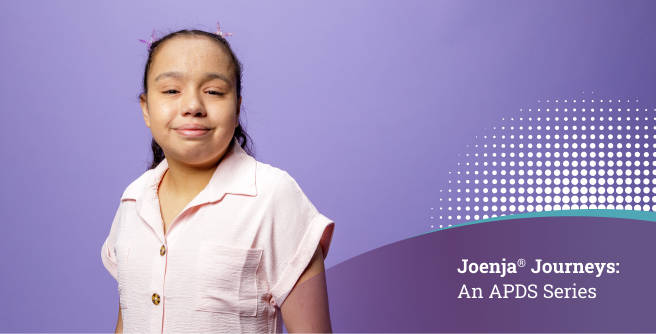
Joenja Journeys: An APDS Series
4:52
Listen in as Mariana, a patient living with APDS, shares how her symptoms as a child affected her life as well as what Joenja means for her

Joenja Journeys: An APDS Series
4:18
Listen in as Annie, a patient living with APDS, shares her emotional journey to diagnosis

Joenja Journeys: An APDS Series
4:34
Listen in as Liam, a patient living with APDS, shares his long journey to diagnosis
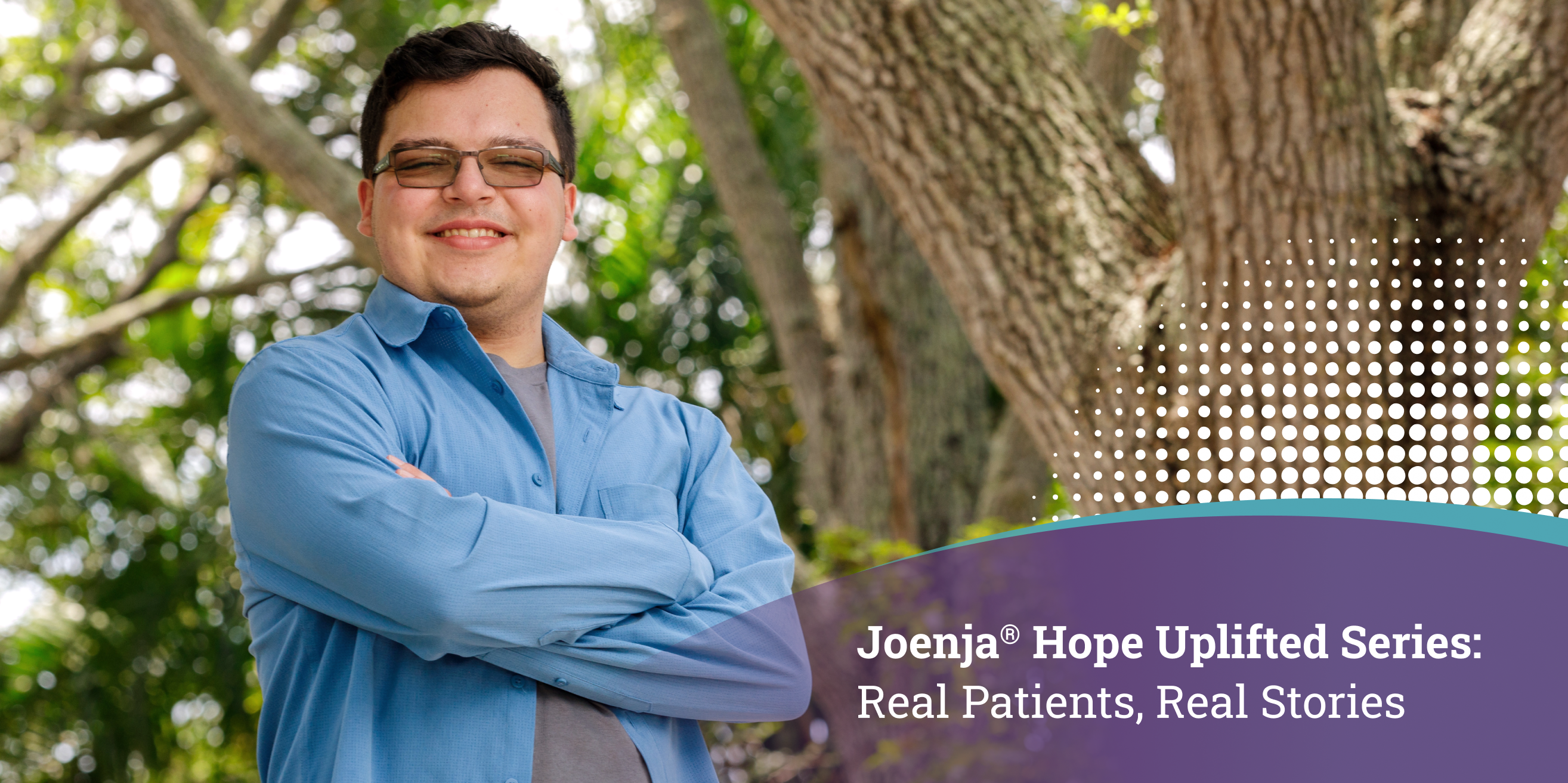
Joenja Hope Uplifted Series: Real Patients, Real Stories
10:10
Listen in as Tyler, a patient living with APDS, shares the symptoms that led to his diagnosis

Joenja Journeys: An APDS Series
5:40
Listen in as Tyrek, along with his mother and caregiver, Twana, share their experience with APDS
APDS, activated PI3K delta syndrome.
Right Circle
Left Circle








